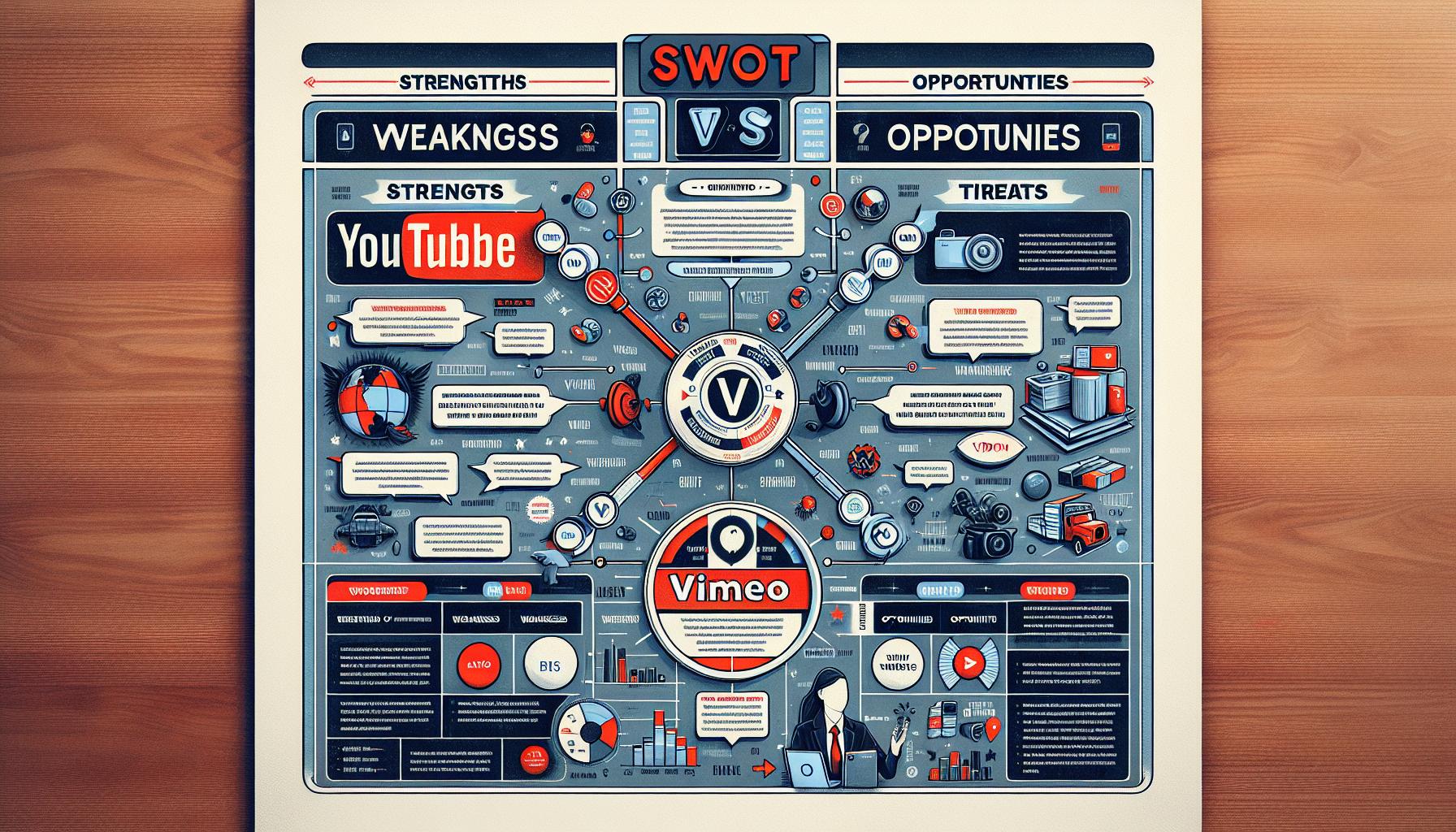YouTube vs. Vimeo: Video Sharing Platforms SWOT Analysis
Comparing YouTube and Vimeo: An Analytical SWOT Analysis
In the world of video sharing platforms, two major players dominate the market: YouTube and Vimeo. Both platforms offer users the ability to upload and share videos, but they have distinct differences in terms of their strengths and weaknesses. In this article, we will conduct a SWOT analysis of both YouTube and Vimeo to understand their competitive positions and potential opportunities.
YouTube’s Strengths: Dominance and User Engagement Pros
When it comes to video sharing platforms, YouTube undoubtedly holds a dominant position. With over 2 billion logged-in monthly users worldwide, YouTube offers unparalleled reach for content creators. This vast user base provides an enormous opportunity for individuals and businesses to reach a wide audience with their videos. Additionally, YouTube’s powerful algorithm ensures that popular and engaging content is given priority, increasing the likelihood of videos going viral and attracting more viewers.
Furthermore, YouTube offers a variety of engagement features that keep users coming back. From live streaming to comments sections and likes/dislikes, YouTube allows for a high level of interaction between creators and their audience. This engagement not only fosters a sense of community but also provides valuable feedback for content creators to improve their videos.
Vimeo’s Strengths: Niche Content and Creative Community
While YouTube may be the giant in the video sharing industry, Vimeo has carved out a niche for itself by focusing on high-quality, creative content. Vimeo is known for its emphasis on artistic expression and storytelling, attracting a community of filmmakers, musicians, and other creative professionals. This focus on quality over quantity has allowed Vimeo to cultivate a dedicated audience that appreciates the unique and thought-provoking content it offers.
Vimeo also excels in providing a more customizable and ad-free viewing experience. Unlike YouTube, which bombards viewers with ads, Vimeo offers paid plans that eliminate ads and provide additional storage and advanced analytics. This ad-free experience enhances the viewing pleasure for users and allows creators to showcase their work without distractions.
Weaknesses: YouTube’s Content Overload and Copyright Issues
One of the main weaknesses of YouTube is the sheer volume of content available on the platform. While this vast library of videos provides variety, it also makes it difficult for new creators to stand out and gain traction. Additionally, the abundance of low-quality and spam content on YouTube can make it challenging for viewers to find relevant and engaging videos.
Another weakness that YouTube faces is copyright infringement. Due to the ease of uploading and sharing videos, copyright violations are a common problem on the platform. This has led to legal battles and controversies, tarnishing YouTube’s reputation and discouraging some creators from showcasing their work on the platform.
Opportunities and Threats: Vimeo’s Potential and YouTube’s Competition
Vimeo has the opportunity to further capitalize on its niche market by attracting more creative professionals and expanding its library of high-quality content. By continuing to focus on artistic expression and storytelling, Vimeo can differentiate itself from YouTube and provide an alternative platform for creators looking for a more curated and professional environment.
On the other hand, YouTube faces increasing competition from other video sharing platforms such as TikTok and Instagram Reels. These platforms are gaining popularity, particularly among younger audiences, and pose a threat to YouTube’s dominance. To combat this, YouTube needs to continue innovating and adapting to changing user preferences to retain its position as the go-to platform for video sharing.
In conclusion, both YouTube and Vimeo have their strengths and weaknesses in the video sharing industry. YouTube’s dominance and user engagement features make it an attractive platform for content creators and advertisers. On the other hand, Vimeo’s focus on niche content and ad-free experience appeals to a more creative and discerning audience. The future will be shaped by how each platform leverages their strengths and addresses their weaknesses to stay relevant and competitive in the ever-evolving world of video sharing.













